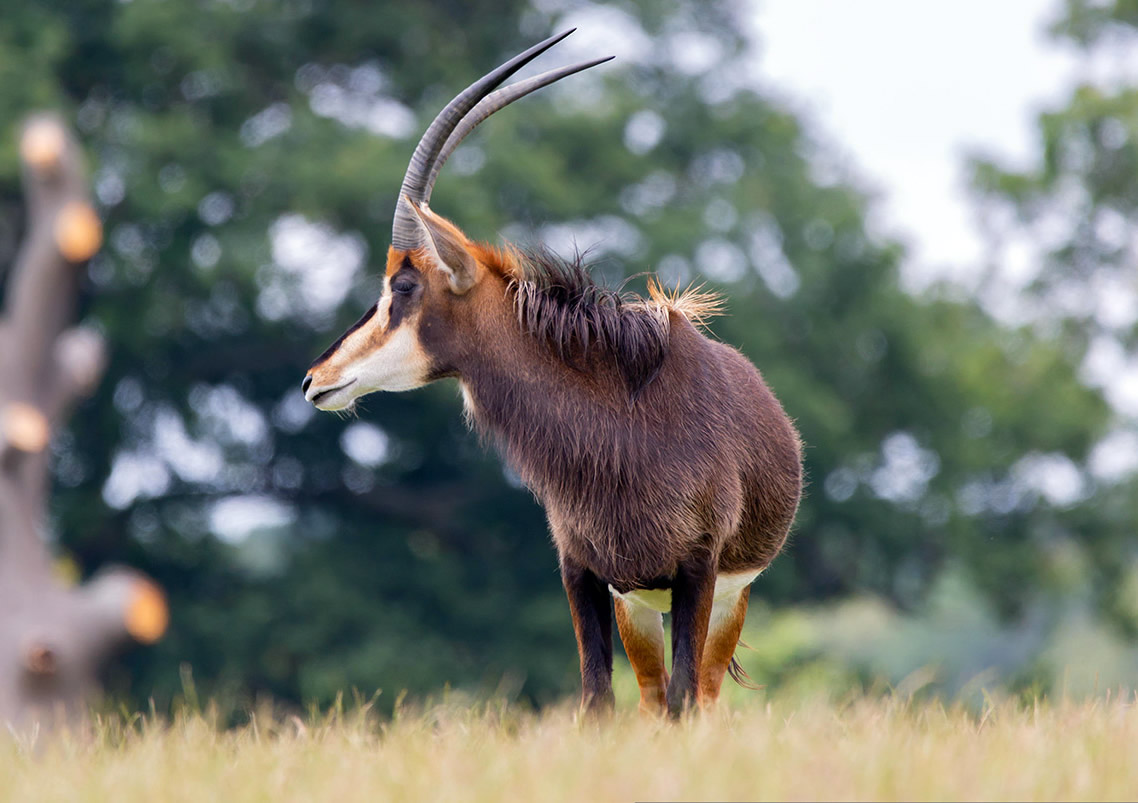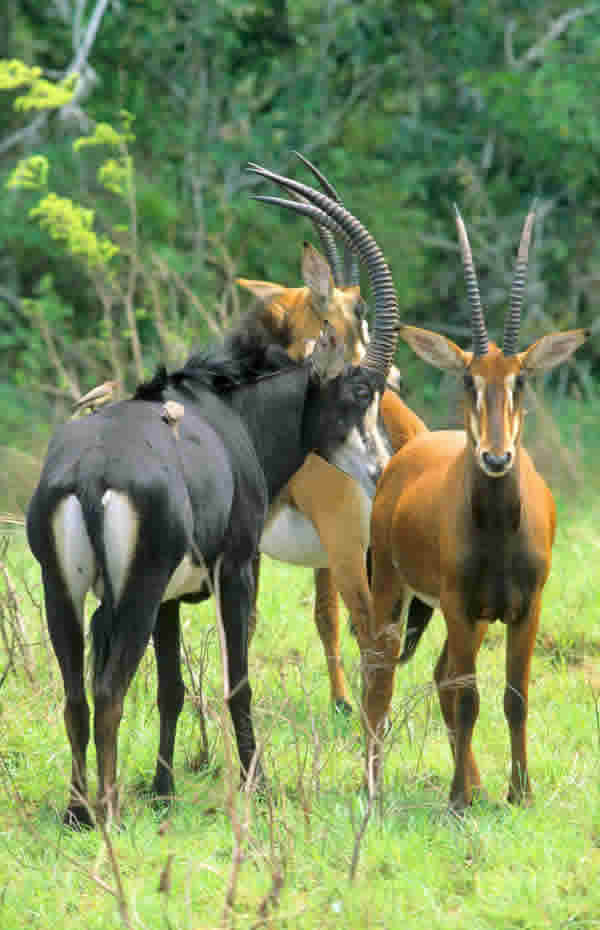
The national reserve lies approximately 33km south of Mombasa town, in Kwale district of coast province. The coastal ecosystem comprise of a heterogeneous habitat including forestlands, exotic plantations, scrublands and grasslands. The ecosystem holds one of the largest coastal forests in East Africa after Arabuko-Sokoke forest.
The reserve is rich in flora and fauna and hosts the highest density of African elephant in Kenya. Other animal species found in the area are Sable antelope, black and rufous elephant shrew, bushy tailed mongoose and other small mammals like fruit bat. The forest is an important bird area and is endowed with forest birdlife while the grasslands hold localized species such as red-necked-Spurfowl, Croaking Cisticola and Zanzibar Red Bishop.
The scenically beautiful Shimba Hills National Reserve coastal forest is the only place in Kenya to see Sable Antelope.
The Shimba Hills National Reserve being only 60km from Mombasa, is ideal for a day visit. It contains one of the largest coastal forests in East Africa and is where a great diversity of Kenya's plant species are found, many of which are endangered. The Shimba Hills National Reserve is home to many Elephant, and is the only place in Kenya where tourists can see the Sable Antelope.
Shimba Hills National Reserve is 300 Km2 and protected by the Kenya Wildlife Services (KWS). The reserve is well known for its large elephant population, which in the early 2000’s became unsustainable. In 2005 KWS translocated over 150 elephants to Tsavo East National Park, it was described at the time as “the single largest translocation of animals ever undertaken since Noah’s ark”.
There are still over 500 elephants in the reserve, which causes tense human wildlife conflicts with the subsistence farmers in the area. To help reduce this conflict the Mwalunganje Elephant Sanctuary was established and shares a boundary with Shimba Hills National Reserve providing the elephants a migration corridor.
The Reserve is also known for its excellent birding opportunities and twitchers can search for the Croaking Cisticola or the Zanzibar Red Bishop. Due to the thick nature of the forest, game viewing is not as rewarding as on the savannahs, as many animals spend their time deep in the forest. This is not necessarily a bad thing, as it makes the wildlife encounters that you do have, that much more spectacular. The best time of day to go for a game drive would be in the late afternoon, when the cooler temperatures lure the animals out of the shade and seek water.
The magnificent 21 m high Sheldrick Falls are in Shimba Hills; the late David Sheldrick, founder of the Sheldrick Wildlife Trust, once explored this area, whilst flying over the area he discovered a hidden waterfall within the Shimba Hills National Reserve, and subsequently had the falls named after him.
Getting to Shimba Hills National Reserve
From Mombasa or Diani Beach the road is good, it is about an hours drive from Diani Beach.
Airport - Moi International Airport in Mombasa
Shimba Hills National Highlights and Attractions
- The only place in Kenya you can see Sable Antelope
- Guided forest walks up to the scenically beautiful Sheldrick Falls
- It is known for its herds of Elephants
- Visit the Mwalunganje Elephant Sanctuary
- Scenic viewpoints and five picnic areas
What to do in the Shimba Hills National Reserve - The Kenya Wildlife Service offers guided walks to the Sheldrick Falls - a great opportunity to see the birdlife in the forest. Game drives are more adventurous than on the savannahs as animals are harder to spot.
You can also go for sundowners on Pengo Hill, which faces west and watch the sun drop down below the horizon. On a clear day you can see the Tsavo Plains and Mt Kilimanjaro.
The Experience
The Shimba Hills National Reserve is perfectly situated for a day trip if you are staying in Mombasa or Diani Beach. The Reserve is characterised by rolling hills which are covered in coastal forests which forms an important plant biodiversity area; as over 50% of the 159 rare plants in Kenya are found here including rare cycads and stunning orchids.
The Reserve is home to the last breeding herd of Sable Antelope in Kenya and you should keep a lookout for these large ebony coloured antelope with their scimitar shaped horns.
Explore the reserve on guided game drives with a local tour operator. The roads are undulating and steep and a 4x4 vehicle is needed to navigate them. One of the most memorable activities on offer is a guided walk through the forest with a Kenyan Wildlife Service's Guide - who takes you through the forest to the beautiful Sheldrick Falls.

